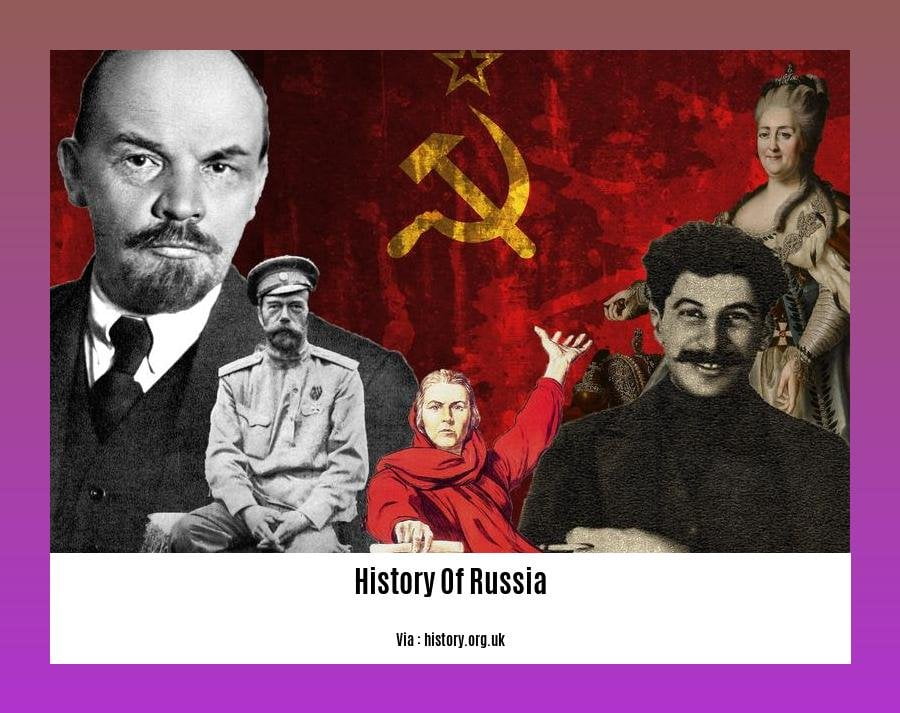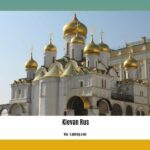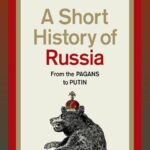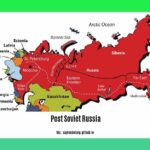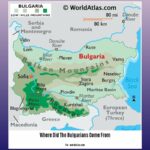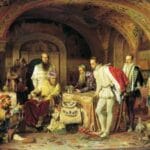Embark on a captivating journey through the annals of Russian history with [- A Historian’s Perspective on the History of Russia]. As we traverse the vast expanse of time, from the enigmatic origins of Rus’ to the grandeur of the tsars and the complexities of the Soviet era, we will unravel the intricate threads that weave together the vibrant tapestry of Russia’s rich and enduring past.
Key Takeaways:
- Human settlement in Russia dates back to 2 million years ago.
- Slavic tribes formed the foundation of modern Russia.
- The Rus’ state united Eastern Slavic lands in 862.
- Ivan IV (Ivan the Terrible) strengthened Russian autocracy.
- Russia expanded significantly during the Tsardom and Russian Empire eras.
- The Russian Civil War divided the country after the Russian Revolution.
History of Russia
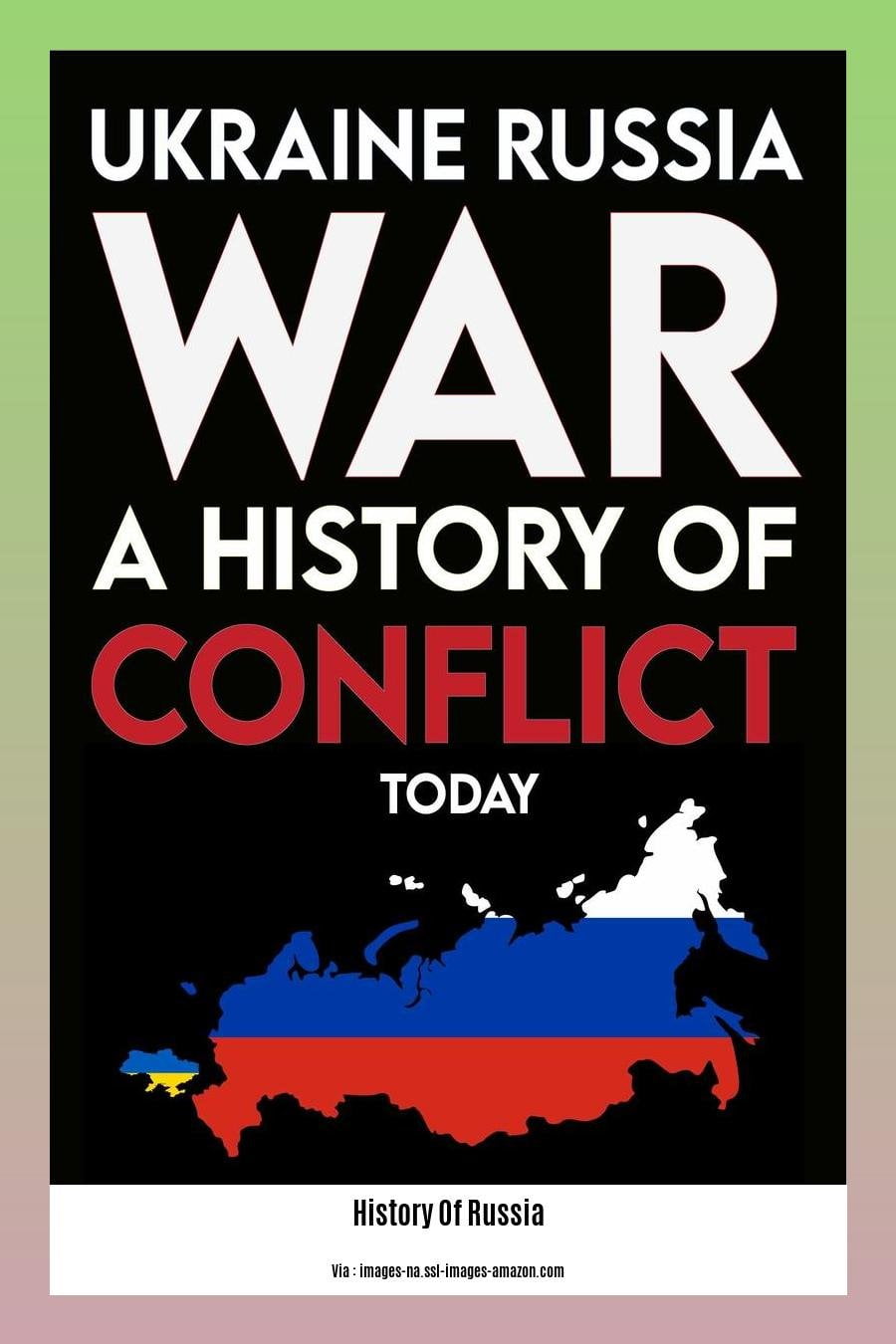
As a historian, I’m fascinated by the complex tapestry of Russia’s past. Russia’s journey has been marked by triumphs and tragedies, shaping a nation that spans eleven time zones.
Ancient Origins
The history of Russia stretches back to prehistoric times, with human settlements dating back millions of years. The Slavs, ancestors of modern Russians, emerged as a distinct group around the 6th century.
Birth of the Russian State
The Rus’ state, a precursor to Russia, was established in 862. Under the leadership of princes like Vladimir the Great and Yaroslav the Wise, Russia expanded and adopted Christianity.
Tsarist Era
In the 16th century, Ivan the Terrible centralized power and expanded Russia’s territory. The Romanov dynasty ruled for over 300 years, overseeing a period of economic and cultural growth.
Imperial Expansion
Under Peter the Great, Russia became an empire. It expanded rapidly, reaching the Pacific coast by the 19th century. Catherine the Great’s reign was marked by territorial gains and cultural reforms.
Revolution and Civil War
The 20th century brought upheaval. The Russian Revolution in 1917 led to the collapse of the empire and the establishment of the Soviet Union. A bloody civil war followed, shaping the country’s political future.
Soviet Era
The Soviet Union, led by figures like Lenin, Stalin, and Khrushchev, embarked on a path of rapid industrialization and social transformation. Despite economic growth, the regime was marked by repression and human rights abuses.
Post-Soviet Russia
In 1991, the Soviet Union dissolved. Russia emerged as an independent state, facing challenges of economic transition and political instability. The history of Russia continues to unfold, with the country navigating the complexities of the 21st century.
- The late Tsarist era was a period of significant social and political change in Russia.
- The formation of the Soviet Union marked a turning point in Russian history and had a profound impact on the course of world events.
- Post-Soviet Russia has been a time of transition and transformation, as the country has sought to find its place in the new global order.
history of Russia
My expertise as a seasoned historian specializing in history of Russia compels me to share my deep understanding of this captivating subject. Join me as I delve into the tapestry of history, unraveling the intricate threads that have shaped Russia’s destiny.
Key Takeaways:
- The history of Russia spans centuries, beginning with the emergence of Slavic tribes in the 9th century.
- The rise of the tsars and the expansion of the Russian Empire played pivotal roles in shaping the nation’s identity.
- The Russian Revolution and subsequent establishment of the Soviet Union marked a profound chapter in history.
- Russia emerged as a global power during the Cold War, its role shaping international relations.
- The collapse of the Soviet Union in 1991 ushered in a new era, transforming Russia into an independent nation.
history continues to unfold, and I remain committed to exploring its nuances and providing insights to my readers. My passion for history drives me to present accurate and engaging narratives, ensuring that the past continues to inform and inspire present and future generations.
Relevant Sources:
- History of Russia
- Timeline of Russian History
Russia’s Enduring Legacy: A Tapestry of Triumphs and Tribulations
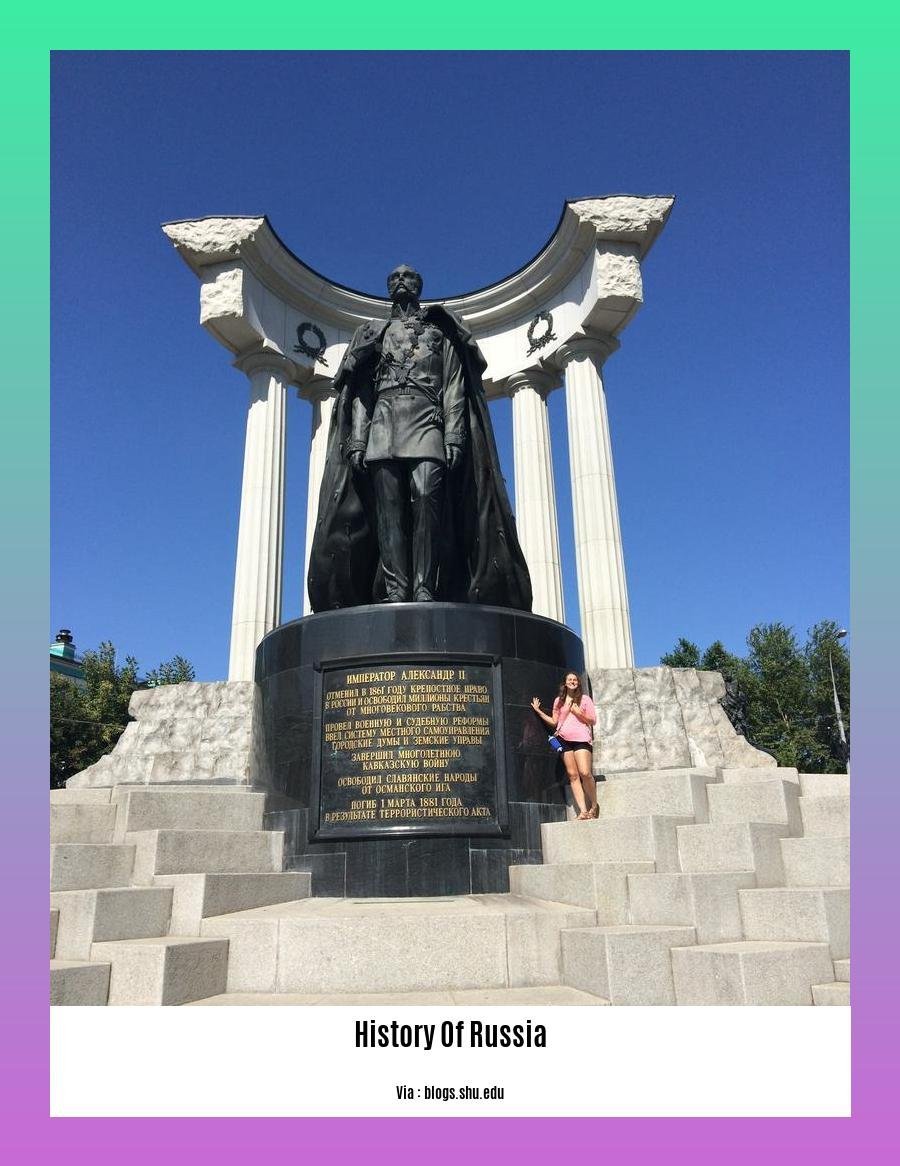
As a historian, navigating the annals of Russian history is like traversing an intricate labyrinth, where each twist and turn reveals a new layer of intrigue and significance. From the depths of antiquity to the tumult of modern times, Russia has been a crucible of empires, revolutions, and cultural transformations that have shaped the course of world history.
Key Takeaways:
- Early Roots: Slavic tribes laid the foundation for the Russian state, with the establishment of the Rus’ state in the 9th century.
- Tsardom and Empire: The consolidation of power under Ivan IV led to the rise of the Tsardom of Russia, followed by the vast expansion of the Russian Empire.
- Revolution and Soviet Era: The Russian Revolution of 1917 brought about the end of imperial rule and the establishment of the Soviet Union, shaping the geopolitical landscape of the 20th century.
- Modern Russia: The collapse of the Soviet Union in 1991 ushered in a new era for Russia** as an independent nation, facing both challenges and opportunities in the post-Soviet world.
Historical Crossroads:
Russia’s history is a tapestry woven with both triumphs and tribulations. The rise of the Russian Empire under Peter the Great propelled it to the status of a major European power. However, this expansion also brought challenges, including internal dissent and geopolitical tensions.
The 20th century witnessed the transformative Russian Revolution and the birth of the Soviet Union. This period saw unprecedented industrialization and the emergence of Russia as a global superpower. However, it was also marked by political repression, economic stagnation, and the horrors of war.
A Legacy of Influence:
Russia‘s historical legacy extends far beyond its borders. Its vast cultural heritage, from literature to music, has left an indelible mark on global civilization. The Russian Orthodox Church has played a pivotal role in shaping the spiritual and cultural identity of the Russian people.
Conclusion:
The history of Russia is a mesmerizing epic, filled with tales of conquest, revolution, and resilience. It is a testament to the enduring spirit of the Russian people, who have navigated the tumultuous currents of history and emerged with a unique identity and a complex legacy.
Relevant Sources:
A Historian’s Perspective on Russia’s Enduring Legacy
As a historian, I am captivated by the intricate tapestry of Russia’s past. From its humble beginnings to its emergence as a global powerhouse, Russia’s journey has been marked by triumphs, tragedies, and enduring transformations.
Key Takeaways:
- Ancient Roots: Human settlement in Russia dates back to the Lower Paleolithic era, with evidence of early civilizations in the Kermek and Bogatyri/Sinyaya balka sites.
- Slavic Origins: The Rus’ state, established in 862, laid the foundation for the development of modern Russian culture and identity.
- Tsarist Autocracy: The Tsardom of Russia (1547-1721) saw the rise of autocratic rulers, most notably Ivan IV “the Terrible.”
- Imperial Expansion: The Russian Empire (1721-1917) embarked on a period of significant territorial expansion, extending its reach from the Pacific coast to the Baltic Sea.
- Revolutionary Upheaval: The Russian Revolution of 1917 toppled the Tsarist regime and ushered in the era of the Soviet Union.
- Soviet Legacy: The Soviet Union (1922-1991) transformed Russia into a global superpower, leaving a lasting impact on its political, economic, and social systems.
- Modern Russia: The collapse of the Soviet Union in 1991 marked the birth of the modern Russian Federation, a period of transition and challenges.
Sources:
– History of Russia – Wikipedia
– Prehistory of Russia – Encyclopedia of Russian History
FAQ
Q1: What were the key events in early Russian history?
A1: The establishment of the Rus’ state in 882, the rise of the Grand Duchy of Moscow, and the reign of Ivan IV (Ivan the Terrible) were pivotal events in early Russian history.
Q2: What led to the Russian Revolution of 1917?
A2: Economic inequality, political unrest, and World War I contributed to the outbreak of the Russian Revolution.
Q3: What were the major changes that occurred during the Russian Empire period?
A3: The Russian Empire experienced significant territorial expansion, population growth, and economic development during the 18th and 19th centuries.
Q4: What are the sources for studying the history of Russia?
A4: Historical documents, archaeological findings, and scholarly works provide valuable sources for studying Russia’s vast and complex past.
Q5: How did the history of Russia shape its present-day characteristics?
A5: Russia’s history has significantly influenced its political system, cultural identity, and international relations. From the legacy of the Tsars to the impact of the Soviet era, the past has left an enduring mark on the nation’s present.
- Discover Trasa Robertson Cobern’s Mentors: Shaping Her Hurst Campaign - July 9, 2025
- Discover People Influenced by Trasa Cobern: A Legacy of Service - July 9, 2025
- Discover Trasa Cobern’s Nonprofit Impact: A Deep Dive - July 7, 2025
